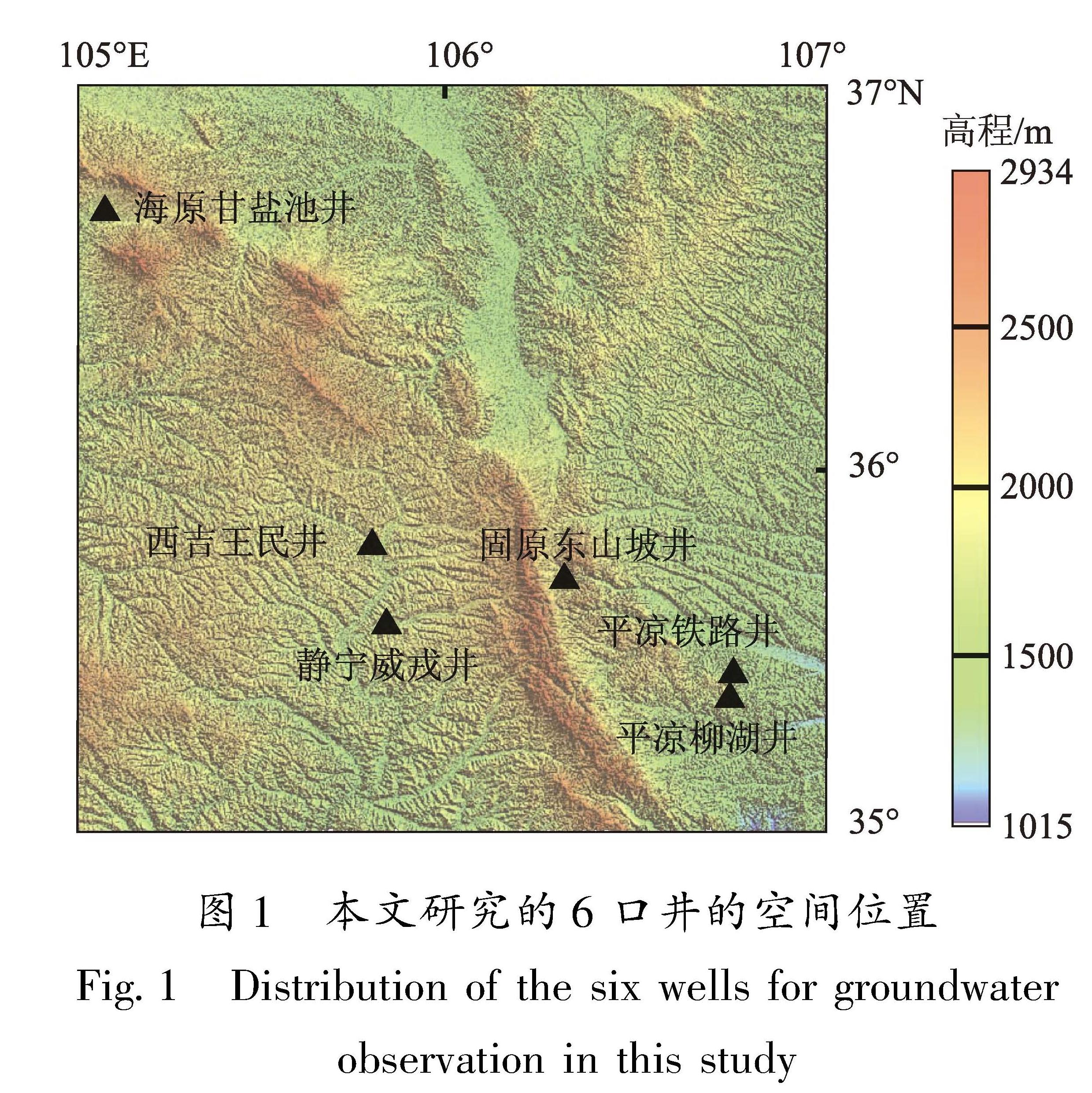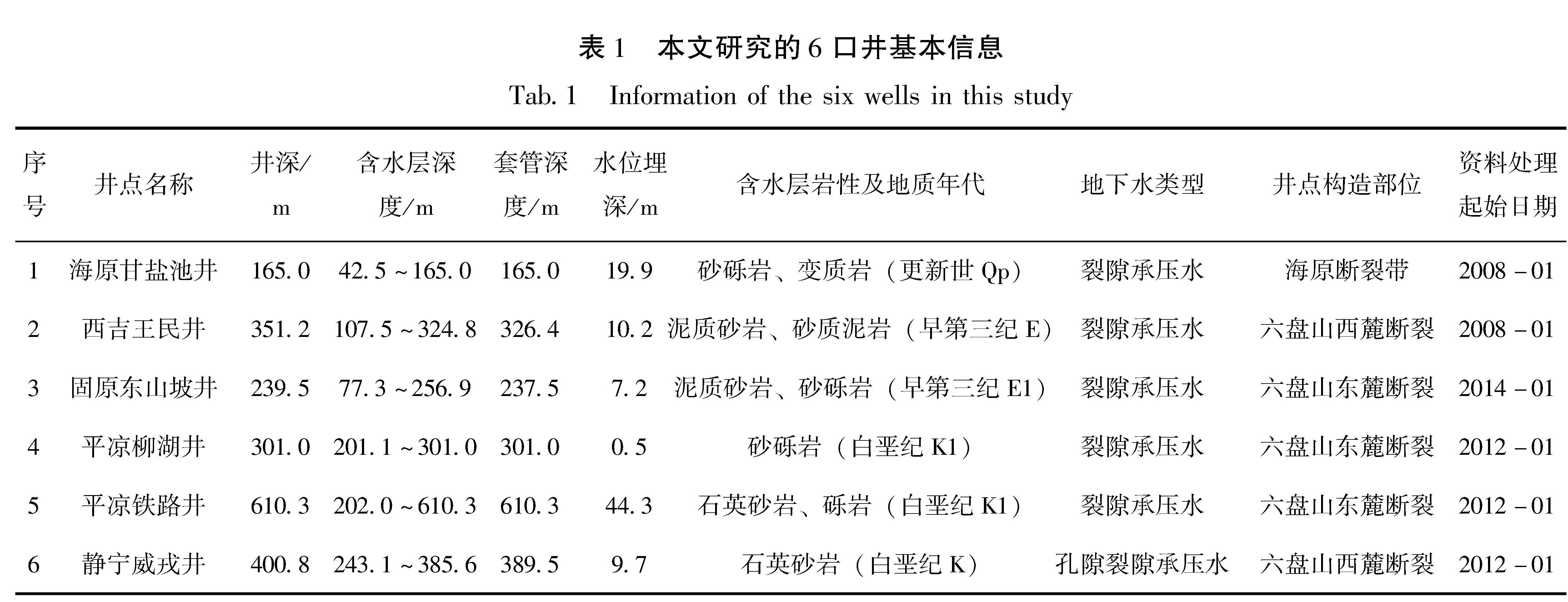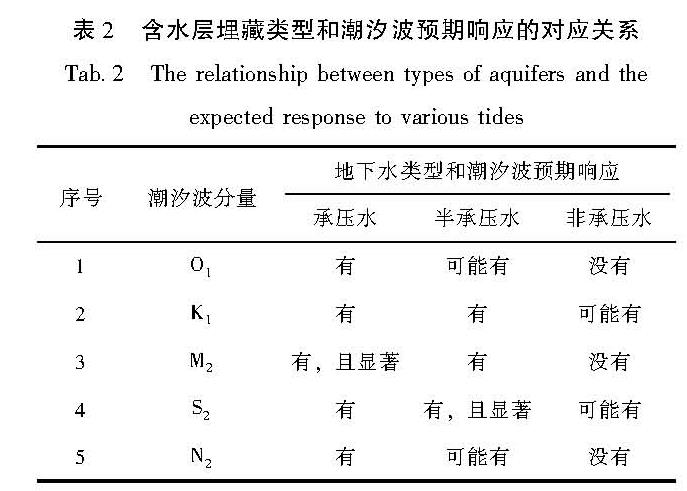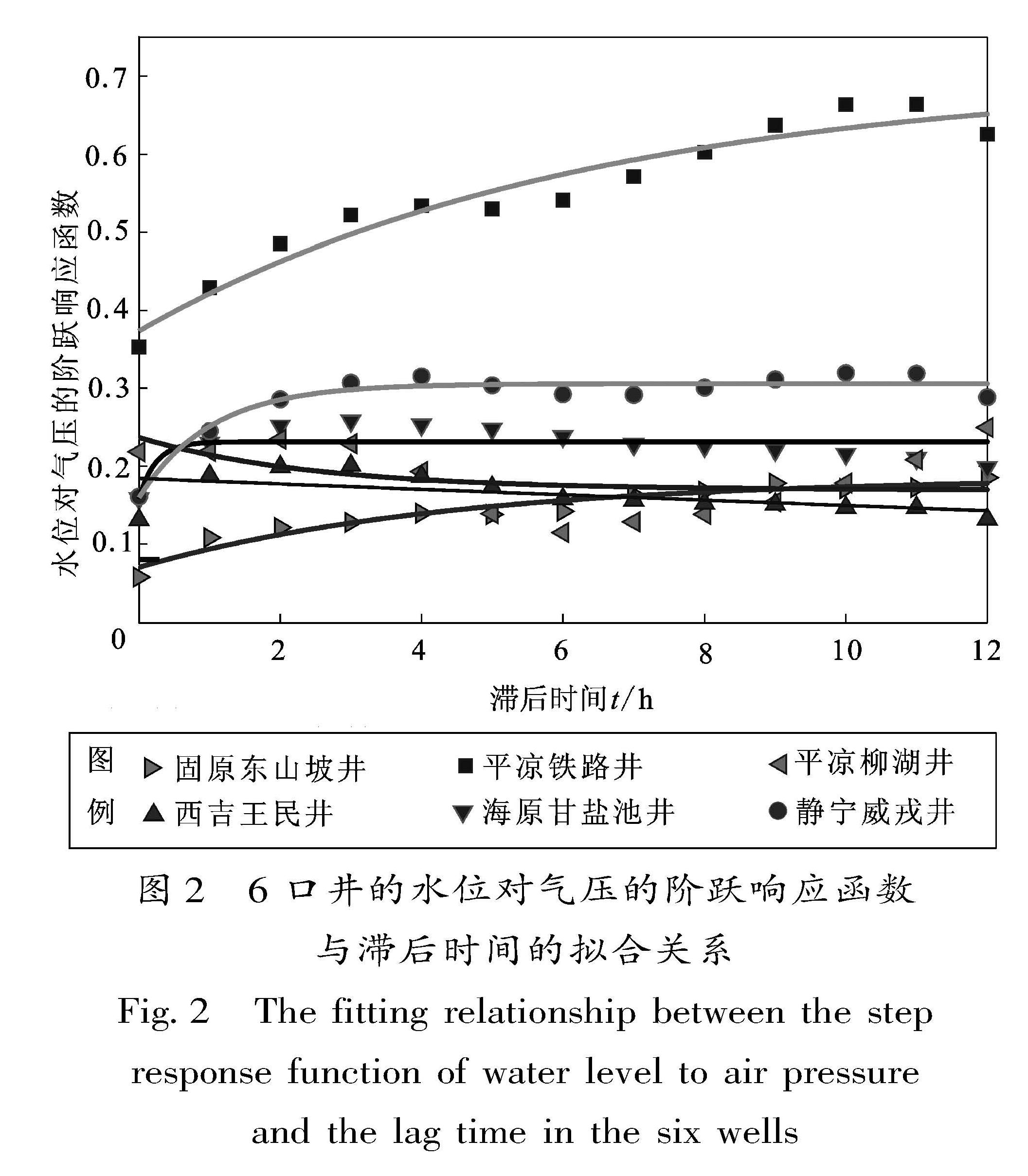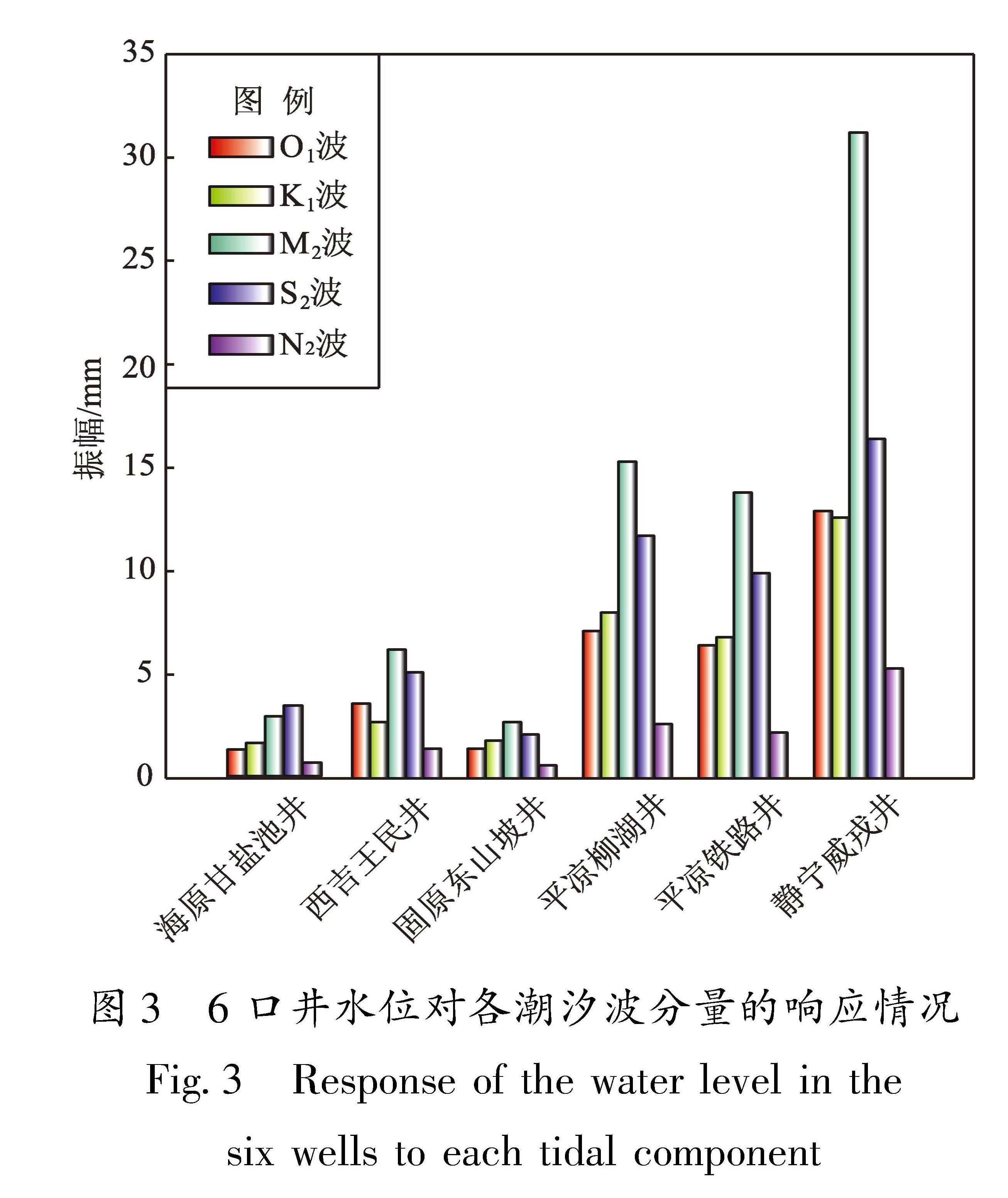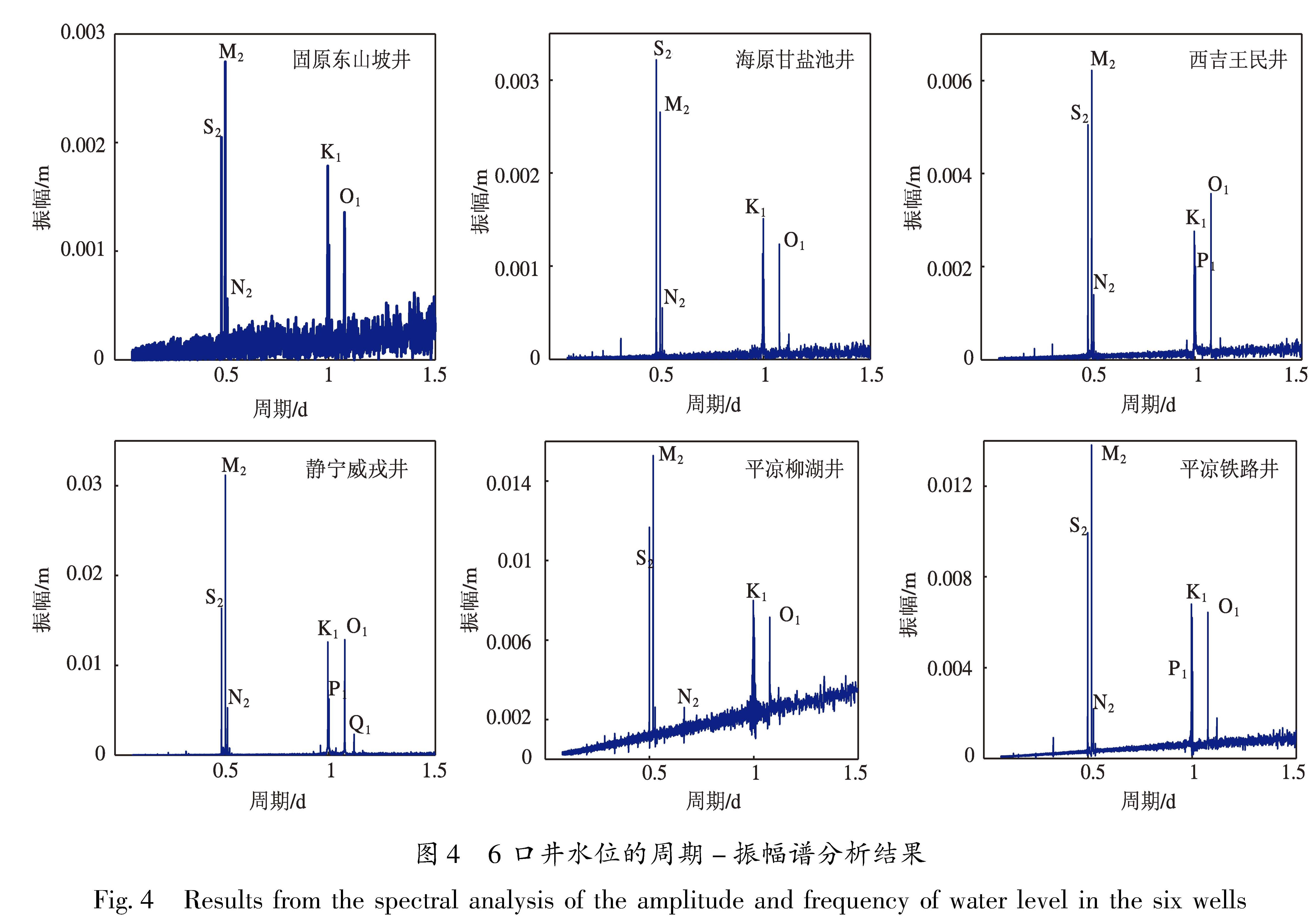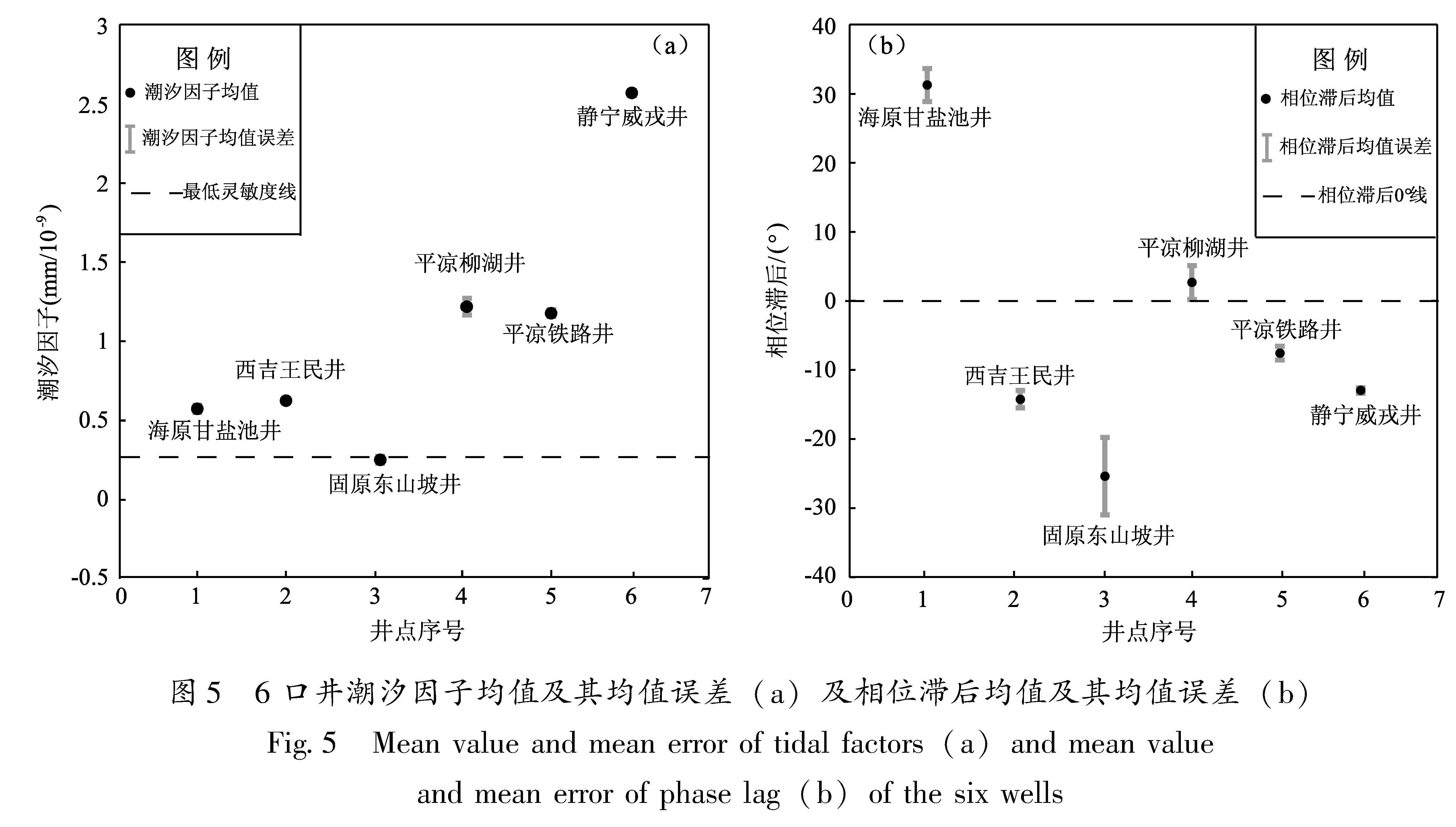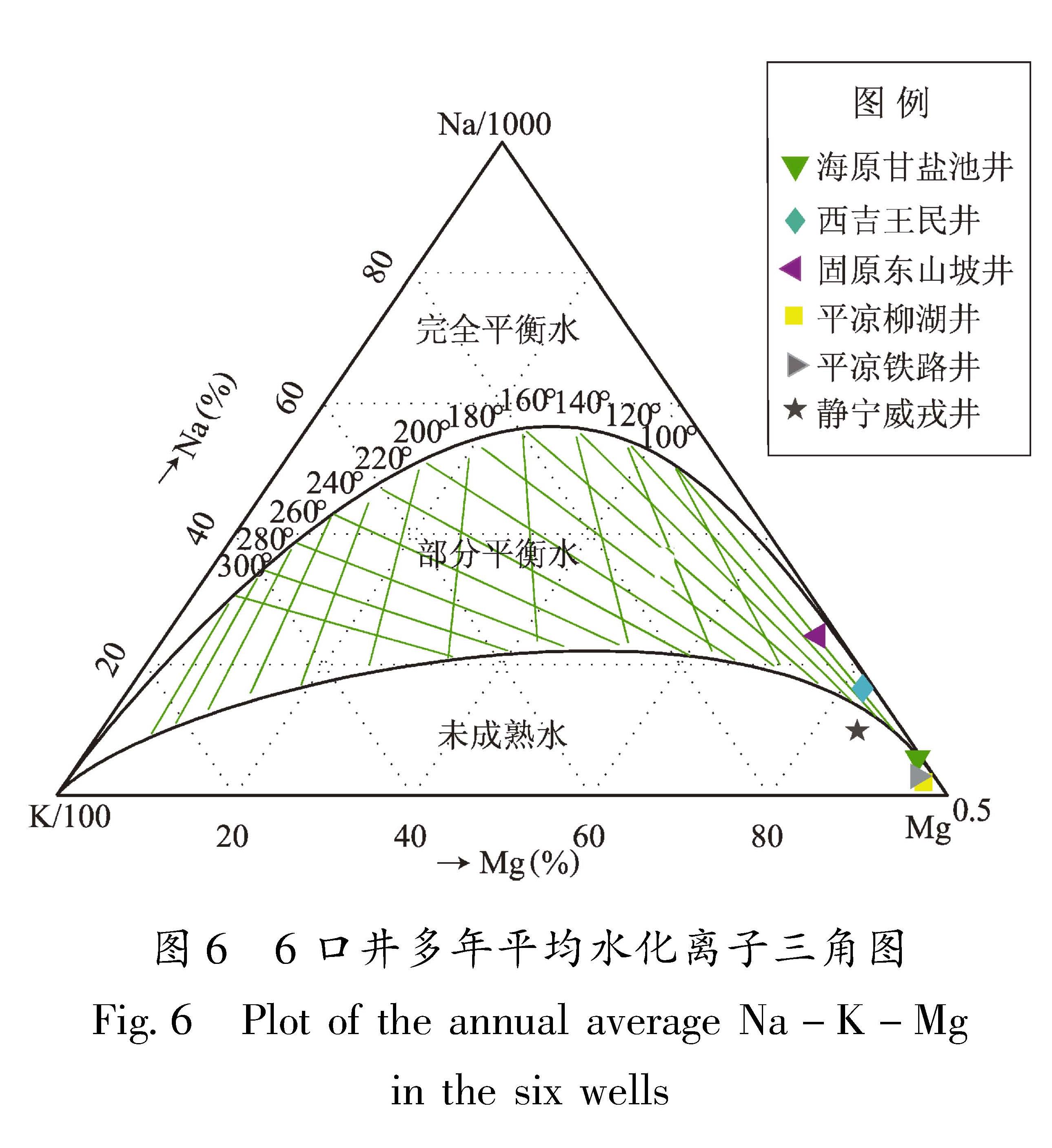基金项目:地震科技星火计划项目(XH19048)、宁夏自然科学基金项目(2020AAC03438)和地下流体监测与应用研究创新团队(CX2019-2)联合资助.
(宁夏回族自治区地震局,宁夏 银川 750001)
(Earthquake Agency of Ningxia Hui Autonomous Region,Yinchuan 750001,Ningxia,China)
well water level; well-aquifer system; groundwater type; South Ningxia and its adjacent areas
DOI: 10.20015/j.cnki.ISSN1000-0666.2022.0059
备注
基金项目:地震科技星火计划项目(XH19048)、宁夏自然科学基金项目(2020AAC03438)和地下流体监测与应用研究创新团队(CX2019-2)联合资助.
引言
用于地震前兆观测的地下水观测井大都是从20世纪70年代以来相继改建和新建的,其类型主要有潜水、承压水以及混合水。经过几十年的观测,井孔观测条件、观测状况是否发生变化,值得进一步了解。另外,井水位观测不仅观测到地震异常信息,还观测到一些与地震无关的干扰信息,其动态变化能直接或间接地反映井水位观测的质量和可信度。利用不同的数理模型和方法进行井孔含水层地下水埋藏类型的分析和判别,将为科学严谨地判定水位观测的质量和可信度评价、水位观测的准入(退出)机制、观测井(点)的勘选等提供有效途径,可进一步提升观测井地下水监测的有效性和科学性。
截至目前,利用多方法进行地震观测井地下水埋藏类型的综合分析和研究鲜有报道,但利用不同方法进行地下水埋藏类型的诊断研究,国内外学者进行了不同程度的尝试,主要有:①Rasmussen和Crawford(1997)提出了利用井水位对气压的阶跃响应函数可进行地下水埋藏类型的定量诊断。近年来,国内外学者采用该方法开展了相关研究(Toll,Rasmussen,2007; Darner,Sheets,2012; 杨柳等,2014; 丁风和等,2017; Ching-Fang,2018),并给出了井水位对气压的阶跃响应函数和滞后时间之间变化规律的关系式,定量区分了承压水、非承压水(潜水)和半承压水(丁风和等,2017)。②天文观测已对固体潮分量的频率特性了解得很清楚,一般考虑M2、O1、K1、S2和N2波5个主要分量(占全部起潮力的95%以上)。利用频谱分析(潮汐波分量的预期响应)也可以诊断和判别含水层的地下水埋藏类型(Weeks,1979; Rojstaczer,Riley,1990; Rahi,Halihan,2013)。③利用垂直流或水平流状态下的相位为正(超前)或为负(滞后),来判别含水层是承压水还是非承压水(Roeloffs,1996; Shi,Wang,2016)。
本文利用宁夏南部及邻区的6口地震观测井的数字化水位和气压等资料,基于井水位对气压的阶跃响应函数方法、频谱分析法、潮汐波群相位超前或滞后法3种方法来诊断和判别各井含水层的地下水埋藏类型。结合各井点近几年水化学离子样品测量结果,利用Piper(1944)三角图评价其水-岩平衡状态。最后,综合评价了各井井-含水层系统的地下水埋藏类型。
1 资料整理与处理
目前宁夏南部及邻区用于地震前兆监测的潮汐波清晰、气压效应明显的数字化水位观测井主要有海原甘盐池井、西吉王民井、固原东山坡井、平凉柳湖井、平凉铁路井和静宁威戎井,具体空间位置如图1所示,其基本信息见表1。
本文研究的6口井水文地质条件不尽相同:①海原甘盐池井地处海原断裂带内部的甘盐池拉分盆地中,隔水层为黏沙土,有较好的封闭性,观测含水层为第四系盆地边缘裂隙含水层,岩性孔隙大,透水性较好,易受降雨和浅层水的影响。②西吉王民井位于新生代断陷盆地内,该区覆盖着较厚的第四系黄土。观测含水层为第三系向斜承压水,岩性为砂岩。补给来源为大气降水和基岩裂隙水,地下水补给源远,径流途径长。③固原东山坡井位于新生代断陷谷地内,断层及节理裂隙发育。观测含水层是第三系的中粒砂岩层,地下水类型以裂隙水为主,富水程度取决于所处的构造位置及构造性质。井水补给主要为东、西、南基岩山区的侧向径流和大气降水,较低的地形条件,成为地下径流汇集的有利地带。④平凉柳湖井位于六盘山东侧的阶地上,为柳湖公园的补给水井。含水层岩性主要为砂砾岩,补给来源为泾河上游和断裂带裂隙水。⑤平凉铁路井位于六盘山东麓断裂附近的河流谷地内。主要含水层为白垩系砂岩、砾岩,地下水类型为裂隙承压水。含水层封闭性较好,一定程度受降雨影响。⑥静宁威戎井附近构造复杂,主要含水层为石英砂岩,承压裂隙孔隙水。含水层封闭性较好,一定程度受降雨影响。
本文研究资料包括:6口井的水位和气压整点值数据,并使用三次样条插值和一般多项式分段拟合值进行缺数补齐; 各井的理论固体潮整点值; 各井点的excel文件,内容包括时间(等间隔的整点值)列、水位列、气压列和理论固体潮列。需要说明的是,水位须由埋深值换算成水头高度值,单位为m。
2 研究方法
2.1 井水位对气压的阶跃响应函数利用6口井的水位、气压和理论固体潮数据,通过卷积回归方法来拟合各井阶跃响应函数的最佳值,根据各井水位对气压的滞后时间与阶跃响应函数间的关系,来判断各井含水层系统的地下水埋藏类型(Toll,Rasmussen,2007; Darner,Sheets,2012; 丁风和等,2017)。在不考虑其他因素(如补给和排泄等)时,井水位的变化量可表示为:

式中:i为滞后时间; m是选择的最大滞后时间; ΔW(t)为t时刻的水位变化量; a(i)为滞后i时刻的气压单位脉冲响应函数; ΔB(t-i)为t-i时刻的气压变化量; β(i)为固体潮响应系数; ΔET(t-i)为t-i时刻的固体潮变化量。
井水位对气压的阶跃响应函数可表示为:

式中:A(i)为井水位对气压的阶跃响应函数,可由气压单位脉冲响应函数a(i)累加求和得到。
2.2 频谱分析方法利用各井的数字化水位和气压整点值数据,通过频谱分析(M2波、O1波、K1波、S2波和N2波5个主要分量的频率特性)和各潮汐波分量的预期响应,来诊断和判别各井含水层的地下水埋藏类型。一般情况下,地下水埋藏类型和潮汐波预期响应存在一定的对应关系(Rahi,Halihan,2013),见表2。
2.3 潮汐波群相位超前或滞后方法利用井水位观测中的相位变化,即相位为正(超前,垂直流)或为负(滞后,水平流),来判断各井地下水埋藏类型(Roeloffs,1996; Shi,Wang,2016)。另外,潮汐因子作为井水位观测系统灵敏度的主要参量,其值的大小反映出井含水层裂隙发育及坚硬程度。一般情况下,潮汐因子在(0.22~10)×10-9 mm体应变范围内,井水位观测系统的灵敏度(潮汐响应)越高,其含水层介质越坚硬且难以变形(刘序俨等,2009)。潮汐因子和相位滞后等潮汐参数可由维尼迪克夫调和分析方法得到。
3 各井含水层地下水埋藏类型特征分析
3.1 井水位对气压的响应函数利用卷积回归方法拟合各井水位对气压的滞后时间与阶跃响应函数间的关系,发现6口井的井水位对气压的滞后时间i(12 h)和对气压的阶跃响应函数A(i)之间存在如下关系:
A(i)=aebi+c (3)
分析可知:① i(定义域)的范围为0~12 h,A(i)的范围为0~1。②随着i的增大,海原甘盐池井、固原东山坡井、平凉铁路井和静宁威戎井A(i)也增大。表明系数a<0时,A(i)随i的增大而增大,井-含水层系统的地下水埋藏类型为承压水。③随着i增大,西吉王民井和平凉柳湖井A(i)则递减。表明系数a>0时,A(i)随着i的增大而减小,井-含水层系统地下水埋藏类型为潜水和半承压水。因此,系数a的正负决定着井-含水层系统地下水的埋藏类型。 ④不管6口井的井-含水层系统的地下水埋藏类型如何,其系数b都小于零,b的大小与井孔的形状、尺寸(结构)和含水层的水力特性有关(Rasmussen,Crawford,1997; 王丽亚等,2012)。⑤前期由于受到明显的井孔存储效应和皮肤效应(又称薄壁效应)的影响(Rasmussen,Crawford,1997; Toll,Rasmussen,2007; 王丽亚等,2012),随着i的增加,海原甘盐池井、固原东山坡井、平凉铁路井和静宁威戎井的A(i)都呈增加趋势,后期变化相对平稳(此时又称最佳阶跃响应函数),转变成相应的含水层模型。因此,从井-含水层系统承压性强弱看,平凉铁路井最强,静宁威戎井次之,固原东山坡井最弱。⑥西吉王民井和平凉柳湖井的井-含水层系统地下水埋藏类型为潜水和半承压水,且与成井时依据贮存埋藏条件定性判别的地下水埋藏类型有一定差别(图2和表3)。分析其原因可能有两点:一是这2口井虽然在承压区(具有承压性)内,但由于比较靠近补给区或排泄区,受控于区域地形地貌、构造特征以及裂隙发育程度等,使得井孔中的地下水与外界有着一定的水力联系; 二是井管年久失修,存在腐蚀破损现象,地表水和浅层水很容易进入井管内,与外界的水力联系也很密切。
图2 6口井的水位对气压的阶跃响应函数与滞后时间的拟合关系
Fig.2 The fitting relationship between the step response function of water level to air pressure and the lag time in the six wells3.2 频谱分析方法选取研究时段内6口井的水位整点值数据,得到其各自水位的频谱分析结果(图3、图4)。①引起海原甘盐池水位变化的主要潮汐分波主要有M2、S2、N2、O1和K1波。其中,S2波振幅最大,达到3.2 mm,由表2可知,该井含水层系统地下水埋藏类型为半承压水。②西吉王民井、固原东山坡井、平凉柳湖井、平凉铁路井和静宁威戎井水位变化中,5种潮汐波分量都有,且不同程度的出现P1和Q1波,但M2波振幅都最大,分别达到6.2、2.7、15.3、13.8、31.2 mm。由表2可知,这5口井含水层系统地下水埋藏类型都为承压水。
3.3 潮汐波群相位超前或滞后方法基于井水位频谱分析结果,利用维尼迪科夫潮汐波群相位超前或滞后方法,分别计算了研究时段内各井M2波和S2波的潮汐因子和相位滞后的均值及其相应的均值误差。结果表明:
(1)海原甘盐池井水位的S2波以及西吉王民井、固原东山坡井、平凉柳湖井、平凉铁路井和静宁威戎井水位的M2波潮汐因子均值都高于井水位观测系统的最低灵敏度0.22 mm/10-9体应变(图5a中虚线)。这6口井的井含水层介质的裂隙发育程度、孔隙度大小和外界存在水力联系的强弱,由高到低分别为固原东山坡井、海原甘盐池井、西吉王民井、平凉铁路井、平凉柳湖井和静宁威戎井。
(2)只有海原甘盐池井和平凉柳湖井相位滞后的均值高于0°,分别为31.31°和2.65°,处于垂直流状态下。其余4口井相位滞后的均值都低于0°(图5b中虚线),处于水平流状态,且相位滞后最明显的是固原东山坡井。因此,基于潮汐波群相位超前或滞后确定的6口井地下水埋藏类型中,固原东山坡井、西吉王民井、平凉铁路井、静宁威戎井为承压水,其余2口井为半承压水或非承压水。
图4 6口井水位的周期-振幅谱分析结果
Fig.4 Results from the spectral analysis of the amplitude and frequency of water level in the six wells4 各井地下水化学组分分析
地下水的地球化学敏感性是地下水系统对自然和人类活动影响的敏感程度所反映的固有属性,且地下水系统中的化学变化相当复杂多变(张炜等,1988; Karimi et al,2017; Stober,Bucher,1999; 张炜斌,2013; 胡小静等,2020)。判定地下水的水-岩相互作用程度,除地下水中阴、阳离子含量(绝对浓度)外,各离子的百分含量(相对浓度)也有较好的指示意义。其中,Na-K-Mg三角图常用来评价水-岩平衡状态和区分不同类型的水样,能把混合水和平衡水很好地分开,样品落在不同的范围内,其意义也不一样:①若落在未成熟水范围内,表明其为浅层的地下水,主要接受大气降水的补给,循环周期相对较快,水-岩之间尚未达到离子平衡状态,水岩作用仍在进行。②若落在部分平衡水范围内,表明其补给来源中除了大气降水外,还有较深层地下水的混入,水-岩反应相对较弱,水流系统相对较为稳定,不易受到干扰; ③若落在完全平衡水范围内,说明水-岩反应较为充分,补给来源主要来自于深层地下水,大气降水补给少。
本文收集整理了2017年以来6口井的水化学离子样品测量结果,数据来源为李新艳等2017年地震科技星火计划中宁夏井泉离子样品测试结果和中国地震局地壳应力研究所全国地震观测井水化学普查结果。对每口井中每种离子进行了均值计算,并投影到三角图中(图6)。由图6可见:从水-岩平衡状态来看,西吉王民井和固原东山坡井处于部分平衡水范围,即地下水的补给来源中除了有大气降水外,还有较深层地下水的混入; 其余4口井都处于未成熟水范围内,以浅表水为主,主要接受大气降水的补给,循环周期相对较快,水-岩之间尚未达到离子平衡状态,水岩作用仍在进行,且靠近Mg端元。
5 综合评价
5.1 评价依据综上所述,井水位对气压的阶跃响应函数方法能区分两种类型的地下水:承压水和非承压水或半承压水; 频谱分析方法可区分3种类型:承压水、半承压水、非承压水; 潮汐波群相位超前或滞后方法只能区分两种类型:承压水和非承压水或半承压水; 水-岩平衡状态分析方法能区分3种类型:未成熟水、部分平衡水和完全平衡水。因此,可通过上述4种方法的组合来综合判定观测井含水层的地下水埋藏类型,其依据是(丁风和等,2021):
(1)当使用3种定量方法,如井水位对气压的阶跃响应函数方法、频谱分析方法、潮汐波群的相位超前或滞后方法都判定为承压水,不管水-岩平衡状态方法判定结果如何,则该井综合判定为承压水。
(2)当使用水-岩平衡状态方法判定为完全平衡水时,则该井直接判定为承压水。
(3)当使用井水位对气压的阶跃响应函数方法和潮汐波群的相位超前或滞后方法判定为非承压水或半承压水,同时,使用频谱分析方法判定为非承压水,且水-岩平衡状态方法表明是未成熟水时,则该井综合判定为非承压水。
(4)其余情况都可将观测井综合判定为混合水。
5.2 评价结果利用井水位对气压的阶跃响应函数、频谱分析法、潮汐波群相位超前或滞后法3种方法诊断和判别了6口井含水层的地下水埋藏类型,同时,结合Na-K-Mg三角图分析评价了各井的水-岩平衡状态(表4)。结果表明:
(1)基于3种方法诊断和判别固原东山坡井、平凉铁路井和静宁威戎井含水层的地下水埋藏类型都为承压水,且与这3口井依据成井时的贮存埋藏条件定性判别的结果(裂隙承压水和孔隙承压水)一致。从水-岩平衡状态来看,虽然这3口井都具有承压性,但受控于区域地形地貌、构造特征以及裂隙发育程度等,使得井孔中的地下水与外界有着一定的水力联系。其中,平凉铁路井和静宁威戎井受大气降水的地表径流、侧向径流和越层补给影响较大,且固原东山坡井还有较深层地下水的混入。
(2)海原甘盐池井、西吉王民井和平凉柳湖井不同程度地表现出承压水的特征,但与外界水力联系关系密切,海原甘盐池井和平凉柳湖井受大气降水影响显著,西吉王民井受较深层地下水的影响。
(3)6口井的井-含水层系统承压性由强到弱分别为平凉铁路井、静宁威戎井、固原东山坡井、西吉王民井、海原甘盐池井和平凉柳湖井。
6 结论
本文利用宁夏南部及邻区6口井的数字化水位和气压等资料,使用3种方法诊断和判别了各井含水层的地下水埋藏类型,并结合各井点近几年水化学离子样品测试结果,分析了各井的水-岩平衡状态,综合评价了各井井-含水层系统的地下水埋藏类型,主要得出以下结论:
(1)基于3种方法诊断和判别固原东山坡井、平凉铁路井和静宁威戎井含水层的地下水埋藏类型都为承压水,与外界有着一定的水力联系。海原甘盐池井、西吉王民井和平凉柳湖井不同程度地表现出承压水的特征,但与外界水力联系关系密切。从以上结论可发现,依据成井时的贮存埋藏条件定性判别的地下水埋藏类型与多方法综合判定的这6口井的地下水埋藏类型不一致,其原因虽然为有些井点在承压区(具有承压性)内,但比较靠近补给区或排泄区,受控于区域地形地貌、构造特征以及裂隙发育程度等,使得井孔中的地下水与外界有着一定的水力联系。有些井点虽然也在承压区内,但井管常年失修腐蚀,存在破损现象,地表水和浅层水很容易进入井管内,与外界的水力联系也很密切。Na-K-Mg三角图反映的水-岩平衡状态能提供很好的佐证。
(2)各井对潮汐波群的响应幅度(振幅)、相应波群的潮汐因子与各井与外界存在水力联系的强弱存在非常好的一致性,即响应幅度和相应波群的潮汐因子越大,井孔与外界存在水力联系越小,反之亦然。这两个指标可反应出井含水层介质的裂隙发育程度、孔隙度大小及裂隙发育程度等。但各井承压性的强弱和与外界存在水力联系的强弱有着一定程度上的不一致性。如卷积回归方法确定的海原甘盐池井、固原东山坡井、平凉铁路井和静宁威戎井都为承压井,且从井-含水层系统承压性强弱看,平凉铁路井最强,静宁威戎井次之,之后为海原甘盐池井,固原东山坡井最弱,这与上述界定的各井与外界存在水力联系的强弱是不一致的。另外,基于多方法综合评价的6口井井-含水层系统承压性由强到弱分别为平凉铁路井、静宁威戎井、固原东山坡井、西吉王民井、海原甘盐池井和平凉柳湖井。以上不一致很可能与各井含水层的水力特性、裂隙发育程度、井孔结构和固体潮汐波频率等存在差异有关。
(3)地震系统内的水位观测井已经观测了几十年,目前其井孔结构、与外界水力联系以及含水层特性等是否发生变化,相应地其产出资料的质量和信度是否可靠并不清楚; 新建的观测井以及从石油、水利和国土等部门移交过来的观测井,如果资料缺失,如何利用这些井开展研究,通过本文研究可以找到很好的解决办法:一是只要有≥2 d的水位(满足潮汐波群相位超前或滞后的需要)、气压数字化观测整点值资料; 二是取一次水样,进行水化学离子组分等分析,就能综合评价这些井孔的地下水埋藏类型,最终为观测井(点)的勘选以及提高观测质量和资料信度等提供依据。
在本文撰写过程中,得到了中国地震局地质研究所车用太研究员、应急管理部国家自然灾害防治研究院刘耀炜研究员以及审稿专家和编辑部老师的悉心指导和帮助,在此一并表示衷心的感谢。
- 丁风和,范雪芳,戴勇,等.2017.井-含水层系统地下水埋藏类型定量分析和判别[J].地震学报,39(1):78-84.
- 丁风和,罗国富,戴勇.2021.地震观测井地下水承压性判定方法研究与实例[M].北京:地震出版社.
- 胡小静,付虹,张翔,等.2020.昭通地区流体观测井地下水地球化学特征[J].地震研究,43(4):630-637.
- 刘序俨,郑小菁,王林,等.2009.承压井水位观测系统对体应变的响应机制分析[J].地球物理学报,52(12):3147-3157.
- 王丽亚,郭海朋,李文鹏.2012.气压对观测井水位的影响及校正方法[J].水文地质工程地质,39(6):29-34.
- 杨柳,马建英,曹井泉,等.2014.利用华北地区承压井水位资料反演含水层体应变[J].中国地震,30(2):249-259.
- 张炜,王吉易,鄂秀满,等.1988.水文地秀化学预报地震的原理与方法[M],北京:教育科学出版社.
- 张炜斌.2013.京西北盆岭构造区温泉流体地球化学[D].北京:中国地震局地震预测研究所.
- Ching-Fang S D.2018.Identification of individual efficiency for barometric pressure and ocean tide load simultaneously acted on deep aquifers adjacent to the West Pacific Ocean[J].Pure and Applied Geophysics,12(2):211-223.
- Darner R A,Sheets R A.2012.Using existing data to estimate aquifer properties,Great Lakes region,USA[J].Groundwater,50(3):477-484.
- Karimi S,Mohammadi Z,Samani N.2017.Geothermometry and circulation depth of groundwater in Semnan thermal springs,Northern Iran[J].Environmental Earth Sciences,76(19):651-659.
- Piper A M.1944.A graphic procedure in the geochemical interpretation of water analysis[J].Trans Amer Geophys Union,25(1):27-39.
- Rahi K A,Halihan T.2013.Identifying aquifer type in fractured rock aquifers using harmonic analysis[J].Groundwater,51(1):76-82.
- Rasmussen T C,Crawford L A.1997.Identifying and removing barometric pressure effects in confined and unconfined aquifers[J].Ground Water,35(3):502-511.
- Roeloffs E A.1996.Poroelastic techniques in the study of earthquake related hydrologic phenomena[J].Adv Geophys,3(7):135-195.
- Rojstaczer S,Riley F S.1990.Response of the water level in a well to Earth tides and atmospheric loading under unconfined conditions[J].Water Resources Research,26(8):1803-1817.
- Shi Z,Wang G.2016.Earthquakes switch aquifers from confined to semi-confined:Earthquake changed aquifer confinement[J].Geophysical Research Letters,4(3):112-120.
- Stober I,Bucher K.1999.Origin of salinity of deep groundwater in crystalline rocks[J].Terra Nova,11:181-185.
- Toll N J,Rasmussen T C.2007.Removal of barometric pressure effects and earth tides from observed water levels[J].Ground Water,45(1):101-105.
- Weeks E P.1979.Barometric fluctuations in wells tapping deep unconfined aquifers[J].Water Resources Research,15(5):1167-1176.
